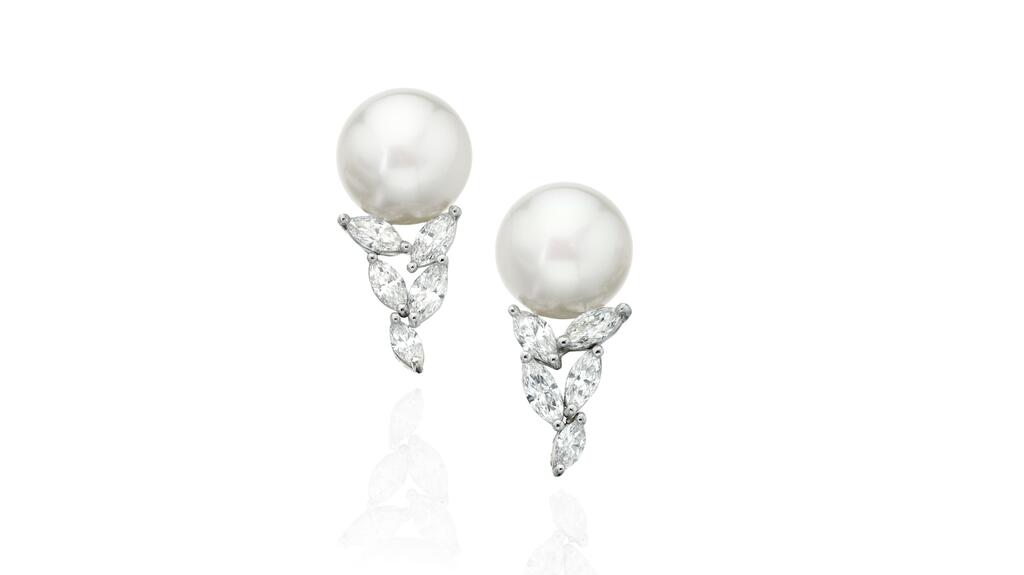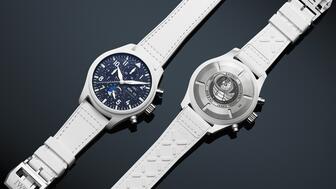Here Comes … A Lot of Couples Getting Married
The number of weddings is expected to near 2.5 million in the United States this year, a number not seen since 1984.

Members of the jewelry industry are well-aware of these difficulties, with the industry’s stable annual slate of events turned upside-down for going on three years now.
Many couples looking to get married have experienced it too, with COVID-19 disrupting plans for big celebrations in 2020 and 2021, leading to expectations that there will be a lot of weddings in the United States this year.
Shane McMurray, founder and CEO of market research company The Wedding Report Inc., predicts about 2.5 million couples will tie the knot in 2022 and spend an average of $24,300 on their wedding, while The Knot released a similarly bullish forecast of 2.6 million weddings.
If achieved, it’ll be the highest number of weddings in the U.S. since 1984—when baby boomers, then 20-38, were in the prime age bracket for marriage—figures compiled by McMurray from the U.S. Census Bureau show.
It’s a boom that presents an opportunity for jewelers, from wedding-day jewelry for the bride or groom, gifts the couple exchanges, or presents for members of the wedding party.
Wedding Trends
Overall trends in the wedding industry mirror what’s probably the most predominant engagement ring trend right now—couples want something customized that reflects their individual personalities and relationships.
Sheavonne Harris, a wedding planner and owner of Events by Sheavonne, said she sees clients whittling down their guests lists to include only close family and friends, investing in after-parties, skipping the wedding cake in favor of other desserts—one couple she worked with had an ice cream truck—and/or doing away with the traditional bridal party.
“There’s been a focus on what they actually want, as opposed to what they are supposed to have.”— Sheavonne Harris, Events by Sheavonne
And just as some brides opt for a colored stone engagement ring, some choose to wear wedding dresses that are not all white, whether it’s a pop of color in a sash or overlay, a subtle all-over shade, or a bold hue.
Harris said one of her recent brides wore pink while another chose green, a trend she expects to continue.
Couples want to look back on their wedding day and say, “it was exactly as we wanted it to be,” not, “we did this because we felt obligated.”
“There’s been a focus on what they actually want, as opposed to what they are supposed to have,” Harris said. “It’s definitely [them questioning], ‘I don’t want to do this, so why do I have to have it?’”
McMurray said in his research, he also sees couples breaking from tradition, for a few reasons.
First, cutting out some traditions—say, the cake or the flowers—allows them to be able to afford exactly what they want in other areas, like the caterer, venue, or photographer.
This is especially true in 2022 as couples battle inflation, supply chain issues, and labor shortages. (Getting labor for events is “really hard right now,” McMurray noted.)
Secondly, many couples are footing the bill for all, or at least some, of their weddings so they feel free to design the sort of ceremony and celebration they want.
The Wedding Report has a rundown from 2017 detailing how often couples pay 100 percent of the cost for various aspects of their weddings, from the engagement ring (85 percent of the time) to musicians for the big day (62 percent).
On average, today’s couples pay 100 percent of the cost for various aspects of the ceremony and celebration 72 percent of the time, according to The Wedding Report.
Lastly, McMurray sees the trend of breaking from long-held practices around weddings and wedding ceremonies as a reflection of a society that is becoming less tradition-bound.

As for the timing of the 2.5 million weddings, McMurray said the core months for weddings vary depending on region but, typically, most weddings happen in May or June, and then September or October.
But if places are booked in 2022, that might force couples to look at traditionally less popular months, like July and August.
‘Til Demand Dies Down
While the expected bump in the number of weddings presents an opportunity this year, McMurray noted that it’s more of a pandemic-induced spike than a long-term uptick.
Data from the Centers for Disease Control and Prevention shows that the U.S. marriage rate—meaning the ratio of marriages to the entire population—has been flat or declining since the mid-1980s, something McMurray points out to his wedding vendor clients.
(The CDC keeps statistics on births, marriages, divorces, and deaths, all considered “vital statistics.”)
He said many in the wedding and wedding-adjacent industries expected a big boom in nuptials in the United States when the millennials, the shadow generation of the 70-million-plus baby boomers, reached marrying age.
National Jeweler was among them. In August 2010, this publication ran an article in its print edition titled “Here Comes the Millennial Bride,” detailing how, “boomers’ children [are] expected to have a big impact on the bridal market.”
But the boom hasn’t happened, at least not yet.
In the decade since that article was published, the number of weddings in the U.S. has hovered between 2.1 million and 2.2 million each year, U.S. Census data shows.
Meanwhile, data from the CDC shows that the marriage rate held steady at 6.8 marriages per thousand people from 2010 to 2013.
It ticked up to 7.0 by 2016 but has since fallen off again, dropping to 6.1 marriages per thousand people in 2019.
According to the data, that’s below the lowest marriage rate recorded during the Great Depression (7.9 in 1932) and well below the post-World War II peak in 1946, when there were 16.4 marriages for every 1,000 people.
Looking past 2022, McMurray predicts the number of weddings will return to pre-pandemic levels. He forecasts 2.2 million weddings for 2023 and 2024, and 2.1 million for 2025.
“We’re only looking at a lot of weddings [this year] because of COVID and that’s really the issue,” he said. “It’s not growth. It’s pent-up demand.”
The Latest

Said to be the first to write a jewelry sales manual for the industry, Zell is remembered for his zest for life.

The company outfitted the Polaris Dawn spaceflight crew with watches that will later be auctioned off to benefit St. Jude’s.

A buyer paid more than $100,000 for the gemstone known as “Little Willie,” setting a new auction record for a Scottish freshwater pearl.

Supplier Spotlight Sponsored by GIA.

Anita Gumuchian created the 18-karat yellow gold necklace using 189 carats of colored gemstones she spent the last 40 years collecting.


The giant gem came from Karowe, the same mine that yielded the 1,109-carat Lesedi La Rona and the 1,758-carat Sewelô diamond.

The three-stone ring was designed by Shahla Karimi Jewelry and represents Cuoco, her fiancé Tom Pelphrey, and their child.

Supplier Spotlight Sponsored by GIA

The Manhattan jewelry store has partnered with Xarissa B. of Jewel Boxing on a necklace capsule collection.

Acting as temporary virtual Post-it notes, Notes are designed to help strengthen mutual connections, not reach new audiences.

The jewelry historian discusses the history and cultural significance of jewelry throughout time and across the globe.

From fringe and tassels to pieces that give the illusion they are in motion, jewelry with movement is trending.

The designer and maker found community around her Philadelphia studio and creative inspiration on the sidewalks below it.

The change to accepted payment methods for Google Ads might seem like an irritation but actually is an opportunity, Emmanuel Raheb writes.

The industry consultant’s new book focuses on what she learned as an athlete recovering from a broken back.

The fair will take place on the West Coast for the first time, hosted by Altana Fine Jewelry in Oakland, California.

Hillelson is a second-generation diamantaire and CEO of Owl Financial Group.

Submissions in the categories of Jewelry Design, Media Excellence, and Retail Excellence will be accepted through this Friday, Aug. 23.


Known as “Little Willie,” it’s the largest freshwater pearl found in recent history in Scotland and is notable for its shape and color.

Clements Jewelers in Madisonville cited competition from larger retailers and online sellers as the driving factor.

The gemstone company is moving to the Ross Metal Exchange in New York City’s Diamond District.

Most of the 18th century royal jewelry taken from the Green Vault Museum in Dresden, Germany, in 2019 went back on display this week.

The Pittsburgh jeweler has opened a store in the nearby Nemacolin resort.

With a 40-carat cabochon emerald, this necklace is as powerful and elegant as a cat.

The Erlanger, Kentucky-based company was recognized for its reliability when it comes to repairs and fast turnaround times.

Unable to pay its debts, the ruby and sapphire miner is looking to restructure and become a “competitive and attractive” company.

The trend forecaster’s latest guide has intel on upcoming trends in the jewelry market.




























